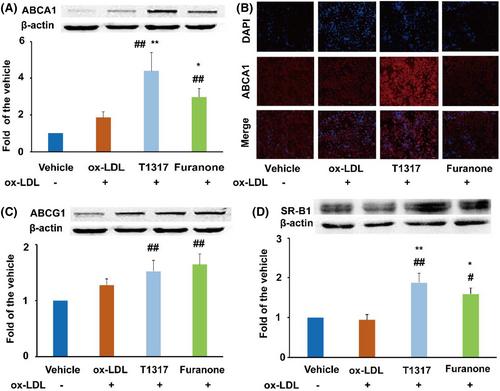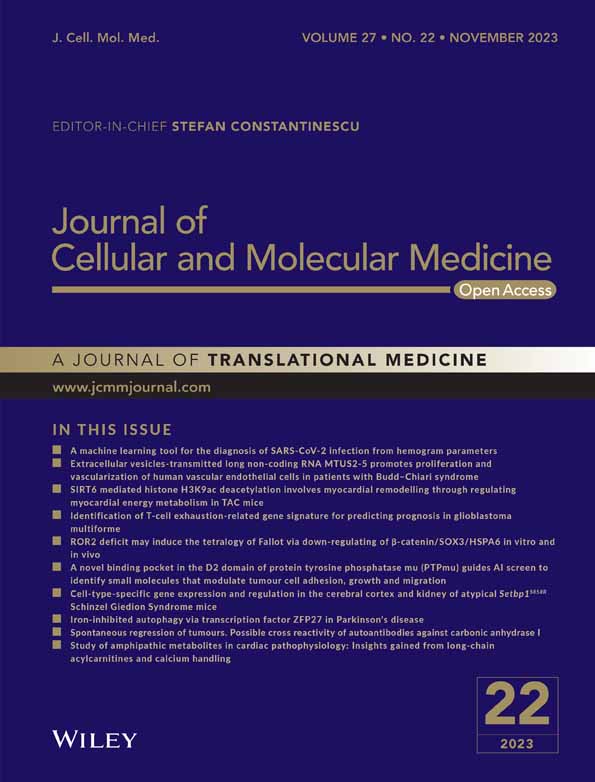更正:"源自海洋的呋喃酮通过靶向 LXRα 和 PPARα 减少体外细胞内脂质积累"。
IF 5.3
引用次数: 0
摘要
Li T, Hu SM, Pang XY, et al. 海洋呋喃酮通过靶向 LXRα 和 PPARα 减少体外细胞内脂质积累。J Cell Mol Med.2020;24:3384-3398.DOI:10.1111/JCMM.15012在 Ting Li 等人的研究中,图 3B 中使用了几张错误的图片。正确的图如下所示。相关的荧光图像显示在 "辅助信息 "中。作者确认本文的所有结果和结论保持不变。本文章由计算机程序翻译,如有差异,请以英文原文为准。

Correction to “The marine-derived furanone reduces intracellular lipid accumulation in vitro by targeting LXRα and PPARα”
Li T, Hu SM, Pang XY, et al. The marine-derived furanone reduces intracellular lipid accumulation in vitro by targeting LXRα and PPARα. J Cell Mol Med. 2020;24:3384-3398. doi:10.1111/JCMM.15012
In Ting Li et al., several incorrect images were used in Figure 3B. The correct figure is shown below. The related fluorescent images were shown in the Supporting Information. The authors confirm all results and conclusions of this article remain unchanged.
求助全文
通过发布文献求助,成功后即可免费获取论文全文。
去求助
来源期刊
CiteScore
11.50
自引率
0.00%
发文量
0
期刊介绍:
The Journal of Cellular and Molecular Medicine serves as a bridge between physiology and cellular medicine, as well as molecular biology and molecular therapeutics. With a 20-year history, the journal adopts an interdisciplinary approach to showcase innovative discoveries.
It publishes research aimed at advancing the collective understanding of the cellular and molecular mechanisms underlying diseases. The journal emphasizes translational studies that translate this knowledge into therapeutic strategies. Being fully open access, the journal is accessible to all readers.

 求助内容:
求助内容: 应助结果提醒方式:
应助结果提醒方式:


